Perspectives
A collection of opinion-rich content from the Virtual Institute’s knowledgebase intended to enable users to see the spectrum of attitudes and opinions regarding gene drive technologies.
This collection begins with the most recent content

|
Opinion: A cautionary tale of experimenting with genetically modified mosquitoes in UgandaBarbara Ntambirweki, The Independent, 2024.
The Uganda Virus Research Institute is pressing forward with gene drive technology which provides a way to rapidly, permanently, and genetically modify wild animals or plants. Gene drive organisms, are a genetically modified organism (GMO) designed to spread a genetic ... |

|
Otago GE Wasp Project Violates International Gene Drive AgreementGE-Free NZ, Scoop, 2024.
Professor Dearden, Otago University, has received $11 million from the Ministry of Business, Innovation and Enterprise (MBIE) to engineer wasps using gene drive technology. He is only consulting with Māori and regulators, ignoring and side-lining the views of other concerned New ... |

|
Perspectives of African stakeholders on gene drives for malaria control and elimination: a multi-country surveyFinda, M.F., Juma, E.O., Kahamba, N.F. et al., Malaria Journal, 22:8384. 2023.
Gene drive modified mosquitoes (GDMMs) have the potential to address Africa’s persistent malaria problem, but are still in early stages of development and testing. Continuous engagement of African stakeholders is crucial for successful evaluation and implementation of these ... |

|
Can Gene Drive Address Health and Conservation Challenges in the Philippines?Kristine Grace N. Tome, Science Speaks, 2023.
ISAAA Inc., in partnership with the Outreach Network for Gene Drive Research and the Malaysian Biotechnology Information Centre (MABIC), gathered approximately 834 online participants during the webinar Genetic Tools for Conservation and Health: What's the Role of Gene Drives? ... |

|
New Techniques of Genetic Modification in Pest Control Spark Debate in CanadaSandeep Kunchikor, Express Healthcare Management, 2023.
Scientists in Canada are urging serious discussions on the use of genetic modification as a new technique in pest control. In a recent report by the Pest Management Regulatory Agency, a branch of Health Canada that regulates pesticide use, experts argue that genetic modification ... |

|
Scientific report urges debate on genetic modification to control insect pestsBob Weber, CTV News, 2023.
Scientists are learning to turn the genetics of insect pests against themselves, altering the genome of familiar foes in ways that give farmers and doctors new ways to fight them. The burgeoning field offers fresh hope against old scourges such as malaria. And it could provide ... |

|
Gene drive in plants emerges from infancyM. J. A. Awan, R. Z. Naqvi, I. Amin and S. Mansoor, Trends in Plant Science, 2023.
Selfish genetic elements (SGEs) display biased transmission to offspring. However, their breeding potential has remained obscure. Wang et al. recently reported a natural gene-drive system that can be harnessed to prevent hybrid incompatibility and to develop a synthetic ... |

|
The double-edged sword effect of expanding Wolbachia deployment in dengue endemic settingsM. G. Pavan, G. A. Garcia, M. R. David and R. Maciel-de-Freitas, The Lancet Regional Health - Americas, 27:100610. 2023.
We can use Brazil as a showcase to foresee and avoid a double-edged sword effect associated with Wolbachia releases. Insecticide resistance of native Ae. aegypti populations is spread worldwide (http://aedes.irmapper.com), and positive results should boost Wolbachia deployment in ... |

|
Engineered and natural gene drives: mechanistically the same, yet not same in kindR. F. Medina and J. Kuzma, Nature Communications, 14:5994. 2023.
We propose the use of the terms natural gene drive (NGD) and engineered gene drive (EGD) arguing against James et al.1, who think both should be included within the term “gene drive”, based on their mechanistic similarities. Thanks to CRISPR-Cas-based gene editing, engineered ... |
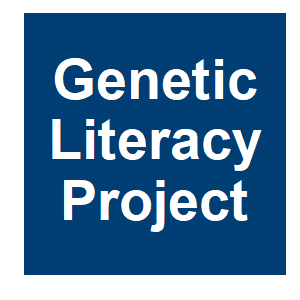
|
Unleashing the swarm: Battling the global mosquito menace and defending public healthJ. Entine and S. Moxon, Genetic Literacy Project, 2023.
There is one solution embraced by global health experts that should be pursued aggressively, if with some caution. Scientists in real-world trials have altered the genomes of entire animal populations, including mosquitoes, to thwart the vectoring of diseases and control pests ... |
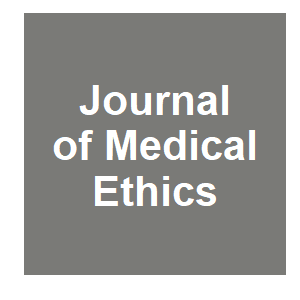
|
Guerrilla eugenics: gene drives in heritable human genome editingA. D. Cutter, J Med Ethics, 2023.
CRISPR-Cas9 genome editing can and has altered human genomes, bringing bioethical debates about this capability to the forefront of philosophical and policy considerations. Here, I consider the underexplored implications of CRISPR-Cas9 gene drives for heritable human genome ... |

|
Malaria Cases In U.S. Trigger Unfounded Claims About Bill Gates, Mosquito ProjectB. Y. Lee, Forbes, 2023.
When the U.S. Centers for Disease Control and Prevention (CDC) issued an alert about finding four malaria cases in Florida and one malaria case in Texas, it created quite a buzz. After all, these were the first reported cases of people actually catching malaria in the U.S. since ... |

|
Off Target: Gene Drives and the Balance of LifeSave Our Seeds, 2023.
This is a compilation of conversations with experts about gene drive technologies and the science/social questions it raises. |

|
Worldwide Experts on Gene DrivesSave Our Seeds, 2023.
We are travelling the world speaking to some of the world's leading thinkers, activists and academics on the impact of gene drives. Join us for this video series as we hear from a diverse range of experts on one of the most controversial new emerging technologies that we face. |

|
Is Bill Gates Releasing Millions of GMO Mosquitoes?!A. Wong, Tech ARP, 2023.
Claim : Bill Gates Is Releasing Millions Of GMO Mosquitoes! People are sharing a World Mosquito Program video as evidence that Bill Gates is manufacturing and releasing 30 million genetically-mosquitoes every week, from his mosquito factory in Colombia. |

|
Generation game: gene-edited mosquitos to fight malariaJ. Opara, Sci Dev Net, 2023.
Population-level changes in the genetic make-up of one of the world’s deadliest animals could provide a key in the fight against malaria, proponents of a radical new technology argue. So-called gene drive technology, where genetic changes are passed down through generations, ... |

|
Cell biology: Selfish B chromosomes unleashed by a dysfunctional chromosome segregation systemP. Ferree, Current Biology, 33:R431-R434. 2023.
A study in the fruit fly Drosophila melanogaster shows that a defective chromosome segregation system allows non-essential B chromosomes to transmit at higher-than-Mendelian frequencies. |

|
Genetically Engineered Mosquito experiment in California’s Central Valley haltedH. Bourque, Friends of the Earth, 2023.
In a victory for environmentalists, scientists and vulnerable agricultural communities across California, the California Department of Pesticide Regulation (DPR) announced yesterday the withdrawal of a permit request for a mass release of experimental genetically engineered ... |
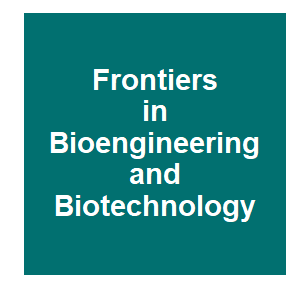
|
Editorial: Genetic control of insect pest species—achievements, challenges, and perspectivesI. Häcker, D. Bartsch, A. Choo and F. Marec, Frontiers in Bioengineering and Biotechnology, 11. 2023.
Genetic control is a type ofbiological control and a promising approach to regulate insect pest populations in a species-specific manner. It is based on targeting the reproductive capacity of the target pest species to reduce population size to non-critical levels. The best known ... |

|
Probing “Selfish” Centromeres Unveils an Evolutionary Arms RaceM. Lampson, The Scientist, 2023.
The so-called Robertsonian (Rb) fusions that led to these rapid karyotype changes are relatively common chromosomal rearrangements. But their accumulation in the populations of Madeira Island and in multiple other isolated mouse populations elsewhere is likely due to another ... |
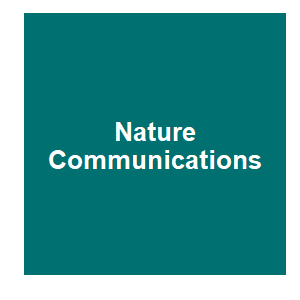
|
A gene drive is a gene drive: the debate over lumping or splitting definitionsS. L. James, D. A. O'Brochta, F. Randazzo and O. Akbari, Nature Communications, 2023.
Gene drive technologies are being considered as a new approach to address a variety of currently intractable global problems, including to prevent disease transmission, reduce crop loss, and preserve biodiversity1. There are some outside the genetics research community who argue ... |

|
Synthetic gene drives as an anthropogenic evolutionary forceA. D. Cutter, Trends in Genetics, 2023.
Genetic drive represents a fundamental evolutionary force that can exact profound change to the genetic composition of populations by biasing allele transmission. Herein I propose that the use of synthetic homing gene drives, the human-mediated analog of endogenous genetic ... |

|
Gene Drives Are ComingD. Lowe, Science, 2023.
Consider the “gene drive” idea - there are a lot of variations, but the general idea is that you introduce a genetic sequence into an organism that can bias (drive) its own inheritance into the next generation. This is a thumb-on-the-scale unnatural selection if ever there ... |
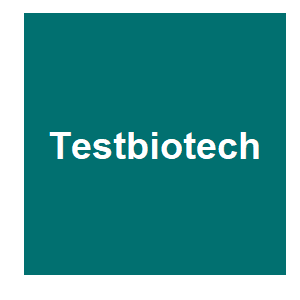
|
Gene Drives: Target Malaria is underestimating the risksC. Then, Testbiotech, 2023.
The Target Malaria consortium has for several years been planning to conduct field trials using genetically engineered mosquitoes in Burkina Faso. The aim is to transfer artificial gene constructs, i. e. the so-called ‘X-shredder’, into wild populations of the mosquitoes. ... |

|
Gene Drives and Vector-Borne Diseases: A Comparative Perspective Using Malaria as a Case StudyS. Todi, The Takshashila Institution, 2023.
Gene drives are an emerging technological application to reduce the prevalence of vector-borne diseases, crop pests, and non-native invasive species. This method for vector control is currently at the research stage, with parallel community engagement programmes being carried out ... |

|
Gene Drives and Vector-Borne Diseases: A Comparative Perspective Using Malaria as a Case StudyS. Todi, The Takshashila Institution, 2023.
Gene drives are an emerging technological application to reduce the prevalence of vector-borne diseases, crop pests, and non-native invasive species. This method for vector control is currently at the research stage, with parallel community engagement programmes being carried out ... |

|
Social justice environmental activists move to block gene editing to control invasive species and promote biodiversity. Here’s why they’re misguidedS. Smyth, Genetic Literacy Project, 2023.
Control of invasive species has been extremely difficult with eradication virtually impossible. To control invasive plant species, chemicals are commonly used while in some instances removal of plants by hand, as Shiva advocates, is undertaken. Efforts to control invasive animals ... |

|
Complicated expansion trajectories of insertion sequences and potential association with horizontal transfer of Wolbachia DNAY. H. Miao, D. W. Huang and J. H. Xiao, Zoological Research, 44:273-275. 2023.
Insertion sequences (ISs) are the simplest structural transposable elements (TEs) in prokaryotes, consisting only of a transposase coding sequence and its bilateral short terminal inverted repeats. Due to their gradually streamlined genomic construction, TEs rarely exist in the ... |

|
Gene Drives Could Fight Malaria and Other Global Killers but Might Have Unintended ConsequencesM. Cobb, Scientific American, 2023.
Every year more than 600,000 people die from mosquito-transmitted malaria, most of them children under age five. Some insects that are disease vectors, such as mosquitoes, are currently expanding their range around the world, bringing new threats. Genetic engineering can fix this ... |

|
CRISPR Gene Drives: A Weapon of Mass Destruction?J. Ng, Medium, 2022.
Gene drives allow scientists to “drive” new genes — and their associated traits — into wildlife populations at unprecedented rates. Here’s a simplified explanation of how gene drives work. In normal sexual reproduction between species with two copies of chromosomes, ... |
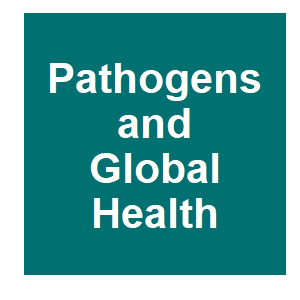
|
Genes drive organisms and slippery slopesD. B. Resnik, R. F. Medina, F. Gould, G. Church and J. Kuzma, Pathog Glob Health, 2022.
The bioethical debate about using gene drives to alter or eradicate wild populations has focused mostly on issues concerning short-term risk assessment and management, governance and oversight, and public and community engagement, but has not examined big-picture- 'where is this ... |

|
Gene drive-mediated population elimination for biodiversity conservation. When you come to a fork in the road, take itB. A. Hay and M. Guo, Proceedings of the National Academy of Sciences, 119:e2218020119. 2022.
How can the ability of t w2 to spread at super-Mendelian frequencies be utilized even if it is unable to directly drive the population to an unfit state? Gierus, Birand, and colleagues proposed placing Cas9 and a gRNA at a neutral position within the t haplotype. In this hybrid ... |

|
Gene editing and agrifood systemsFAO, FAO, 2022.
Gene-editing technologies represent a promising new tool for plant and animal breeding in low- and middle-income countries. They enhance precision and efficiency over current breeding methods and could lead to rapid development of improved plant varieties and animal breeds. ... |
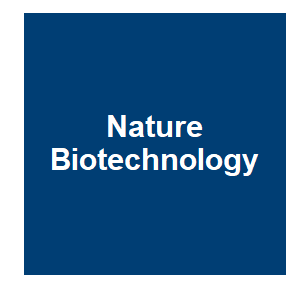
|
Exploring the value of a global gene drive project registryR. I. Taitingfong, C. Triplett, V. N. Vásquez, R. M. Rajagopalan, R. Raban, A. Roberts, G. Terradas, B. Baumgartner, C. Emerson, F. Gould, F. Okumu, C. E. Schairer, H. C. Bossin, L. Buchman, K. J. Campbell, A. Clark, J. Delborne, K. Esvelt, J. Fisher, R., Nature Biotechnology, 2022.
Recent calls to establish a global project registry before releasing any gene-drive-modified organisms (GDOs) have suggested a registry could be valuable to coordinate research, collect data to monitor and evaluate potential ecological impacts, and facilitate transparent ... |
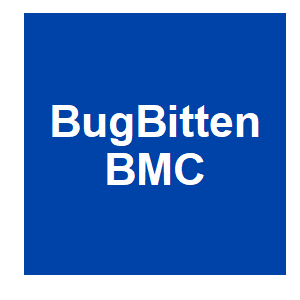
|
Good news in the fight against vector-borne diseasesK. Magori, , 2022.
At the turn of the century, several research groups attempted to apply modern genetic methodologies to achieve similar outcomes without the need for irradiation and the resulting fitness costs. Luke Alphey and his colleagues at Oxford University developed a dominant lethal ... |

|
No Environmental Release of Gene Drive OrganismsAnonymous, STOP GENE DRIVES, 2022.
We urge governments to prevent the environmental release of gene drive organisms and to establish a global moratorium on the release of gene drive organisms at the UN Convention on Biological Diversity (CBD). Gene drives work against natural rules of inheritance forcing nearly ... |

|
Should we use a genetic weapon against mosquitoes carrying malaria?T. H. Saey, ScienceNewsExplores, 2022.
In a large laboratory cage, a male mosquito carries a genetic weapon that could launch the destruction of his species. That loss could also mean the end of the parasite that causes malaria. The weapon? A self-replicating bit of DNA known as a gene drive. It’s one of the most ... |
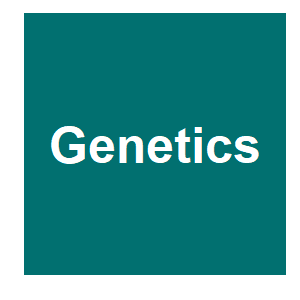
|
Driving lessons: a brief (personal) history of centromere driveH. S. Malik, Genetics, 2022.
Meiosis is an important specialized cell division in many eukaryotic species, including fungi, plants, and animals. Meiosis results in the production of haploid gametes starting from a diploid cell via 1 round of replication and 2 rounds of cell division. In an influential ... |

|
SHOULD WE CREATE GENE DRIVE GREY SQUIRRELSS. Hartley and T. Law, GeneDriveGovernance.org, 2022.
UK scientists have proposed gene drive as a management tool to control grey squirrels. Now is a good time to talk about this emerging technology because the hopes and concerns of experts, stakeholders and the public can help to determine if or how it might be developed. To help ... |

|
WORLDWIDE: EXPERTS ON GENE DRIVESStop Gene Drive, STOP GENE DRIVES, 2022.
We are travelling the world speaking to some of the world’s leading thinkers, activists and academics on the impact of gene drives. We interviewed more than 20 experts from around the world |

|
Externalities modulate the effectiveness of the Wolbachia release programmeE. E. Ooi and A. Wilder-Smith, The Lancet Infectious Diseases, 2022.
Despite the remarkable outcome in Yogyakarta, the wMel approach also has some challenges. In particular, the extent to which ecological, weather, and other external factors influence the dissemination and establishment of wMel in complex urban environments remains unclear. ... |

|
Extreme GM “extinction technology” of gene drives presented as “natural”GM Watch, GM Watch, 2022.
Now similar Orwellian moves are happening in the area of gene drives. A gene drive is a genetic engineering technology that forces a particular genetic modification through a population by changing the natural rules of inheritance, usually to ensure that it is increasingly – ... |

|
Humans Have a Long History of Making ‘Very Bad Decisions’ to Save AnimalsT. McDonnell, The New York Times, 2022.
Environmental reporter Tim McDonnell on the potential negative consequences of animal conservation efforts. McDonnell highlights Target Malaria’s research on gene drive to “eliminate malaria-carrying mosquitos” and quotes New Zealand researcher Philipp Messer saying that ... |

|
Toward product-based regulation of cropsF. Gould, R. M. Amasino, D. Brossard, C. R. Buell, R. A. Dixon, J. B. Falck-Zepeda, M. A. Gallo, K. E. Giller, L. L. Glenna, T. Griffin, D. Magraw, C. Mallory-Smith, K. V. Pixley, E. P. Ransom, D. M. Stelly and C. N. Stewart, Science, 377:1051-1053. 2022.
Current process-based approaches to regulation are no longer fit for purpose Much effort has been expended globally over the past four decades to craft and update country-specific and multinational safety regulations that can be applied to crops developed by genetic engineering ... |

|
Outbreaks of arboviruses, biotechnological innovations and vector control: facing the unexpectedC. Boëte, Innovative Strategies for Vector Control, 6:219-231. 2022.
Outbreaks of arboviruses have occurred in the last decades in many places around the world and a variety of responses have been taken in order to control them. Responses ranged from vaccination campaigns to the use of conventional vector control methods. Innovative approaches ... |

|
Natural selfish genetic elements should not be defined as gene drivesM. A. Wells and R. A. Steinbrecher, Proceedings of the National Academy of Sciences, 119:e2201142119. 2022.
Gene drives are increasingly discussed in the political realm,and how the term is defined therefore has important impli-cations. The opinion piece from Alphey et al. (1) identifies alack of consensus on the definition and makes explicitchanges in how the terminology is being used ... |

|
What can we learn from selfish loci that break Mendel’s law?S. E. Zanders, PLOS Biology, 20:e3001700. 2022.
Mendel’s law of segregation provides a critical foundation for genetic inquiry It is not, however, without exceptions Historically, 2 such exceptions (sex chromosome linkage and chromosome missegregation in meiosis) were used by Drosophila geneticists to help demonstrate ... |

|
Mendel’s laws of heredity on his 200th birthday: What have we learned by considering exceptions?J. B. Wolf, A. C. Ferguson-Smith and A. Lorenz, Heredity, 129:1-3. 2022.
Violations of Mendel’s laws can generically be referred to as ‘non-Mendelian inheritance’. However, from that broad perspective, nearly all inheritance systems would show non-Mendelian inheritance (at least to some degree). To hold exactly, Mendel’s laws impose strict ... |

|
New weapons to fight malaria transmission: A historical viewW. Huang, S.-J. Cha and M. Jacobs-Lorena, Entomological Research, 2022.
The stagnation of our fight against malaria in recent years, mainly due to the development of mosquito insecticide resistance, argues for the urgent development of new weapons. The dramatic evolution of molecular tools in the last few decades led to a better understanding of ... |
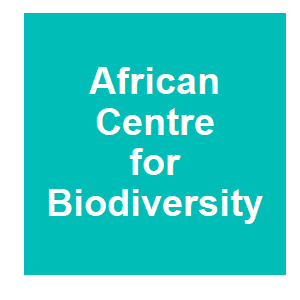
|
The Financialisation of Malaria in Africa: Burkina Faso, rogue capital & GM/gene drive mosquitoesS. Mentz-Lagrange and S. Swanepoel, African Centre for Biodiversity, 2022.
This paper seeks to understand the financialisation of malaria as a vehicle for rogue capital in a context of a weakened state (through capture, corruption and coups) and the power that limits effective interventions. It shows how malaria, along with other diseases, is ... |
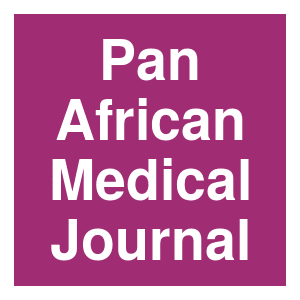
|
Gene-drive mosquitoes, a prospect for future malaria controlS. A. Monawwer, A. O. I. Alzubaidi, F. Yasmin, S. M. Q. Haimour, S. M. I. Shay and I. Ullah, Pan African Medical Journal, 41:2-6. 2022.
Despite major developments in malaria control over the past two decades, the disease continues to scourge the human population across the globe. Rising concerns such as insecticide resistance amongst vector mosquitoes are a cause of huge fear amongst healthcare providers and ... |

|
Uncle Sam’s Dangerous GameX. Ping, XINHUANET, 2021.
Since the very beginning, residents in Florida Keys doubted if the “self-limiting” gene of Genetically Modified (GM) mosquitoes brought and released there by Oxitec, a biotech firm, and approved by U.S. Environmental Protection Agency and Florida Keys Mosquito Control ... |

|
Gene drive: a faster route to plant improvementH. A. Siddiqui, T. Harvey-Samuel and S. Mansoor, Trends in Plant Science, 2021.
Gene drives for control of vector-borne diseases have been demonstrated in insects but remain challenging in plants. Theoretically, they could be transformative in speeding breeding programs and contributing to food security through providing novel weed control methods. Zhang et ... |

|
Gene drive revolution: How genetically tweaked mosquitoes could tip the balance in the battle to contain malariaF. Okumu, Genetic Literacy Project, 2021.
In 2016, a World Health Organisation (WHO) panel concluded that even with the best use of current approaches, there would still be 11 million malaria cases in 2050. What’s needed are longer-term integrated strategies to complement current methods. These may include large-scale ... |

|
Environment Agency Austria, EPA Network, 2021.
Gene drive applications are likely to entail considerable ethical and ecological implications. Apart from societal issues, they pose challenges for environmental risk assessment (ERA), monitoring and risk management: 1)GDOs differ fundamentally from classical GMOs. Notably, GDOs ... |

|
Calling the latest gene technologies ‘natural’ is a semantic distraction — they must still be regulatedJ. A. Heinemann, D. J. Paull, S. Walker and B. Kurenbach, The Conversation, 2021.
Legislators around the world are being asked to reconsider how to regulate the latest developments in gene technology, genome editing and gene silencing. Both the European Court of Justice and the New Zealand High Court have ruled that genome editing techniques should remain ... |
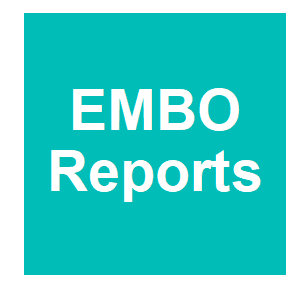
|
The viral eraB. Giese, EMBO reports, 22:e53229. 2021.
New biotechnologies such as gene drives and engineered viruses herald a viral era that would give humans exceptional power over any organism at the level of the genotype. In synthetic biology, orthogonality—in the sense of lack of interference—between different systems or ... |

|
Africa must not rest until Malaria rests: What is the role of emerging technologies?R. Oronje, AFIDEP, 2021.
As we mark the World Mosquito Day today, it is a sad reminder that Malaria still kills hundreds of thousands of people every year, majority of these people in Africa. According to the World Health Organisation (WHO), Malaria killed 409,000 people in 2019, and 94% of these deaths ... |

|
The Complex Lives of Mosquitoes: The Key for Malaria ControlF. Okumu, ISGlobal, 2021.
Mosquitoes spread diseases to millions of people around the world, yet they remain poorly understood by most. Studying their biology and behaviours can help us combat, and eventually eliminate, dangerous diseases such as malaria and dengue fever.There are nearly 3,500 species of ... |

|
New mosquito control tools are criticalL. Braack, Open Access Government, 2021.
Globally, we are making slow headway in the fight against malaria, but there has been progress, nonetheless. Since 2000, 39 countries and territories have managed to rid themselves of malaria; the most recent is China. Existing tools can achieve local elimination, but the battle ... |

|
Invasive Mice and Engineered GenesW. M. Adams and K. H. Redford, Yale University Press Blog, 2021.
On Gough Island, a steep speck of land deep in the South Atlantic, giant mice eat albatross chicks as they sit on their nests. They are house mice, accidental arrivals on the ships of long-dead sealers. But they have lost their secretive, timid, mousy ways. Over numerous ... |

|
2021 WHO guidelines on genetically modified mosquitoesM. Makoni, The Lancet Microbe, 2:e353. 2021.
On May 19, 2021, WHO updated its guidelines for research and development on genetically modified mosquitoes, which define the standards for decision-making about how and when testing should proceed and describe best practices to ensure that research done in a public health ... |
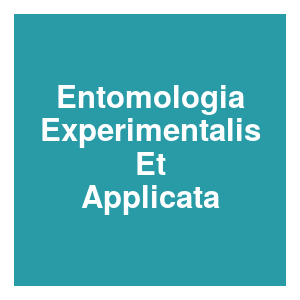
|
Host-associated differentiation of target pests should be assessed before using gene drive as a pest control tool – an opinionR. F. Medina, Entomologia Experimentalis et Applicata, 2021.
Abstract Advances in gene editing have made feasible the potential use of gene drive for pest control. Ecological risk assessments will certainly be required before this technology can be released into open fields. In this article I argue for the importance to include ... |

|
Selfish DNA: how new gene technology could stop the advance of miceM. McMillan, Tentenfield Star, 2021.
It used to be that seeing a mouse in the house was a rare occurrence. Now, it's rarely a day that goes by where we aren't seeing or hearing the little vermin. Current methods of baiting and trapping are struggling to control the plague of mice spreading across regional ... |

|
Living With the Limits of Our New Clerisy’s KnowledgeR. Fernandez, PJ Media, 2021.
We are living in a strange time when reason has fallen short of human expectations and there is, once again, pressure to place our trust in faith. Leighton Woodhouse hit the nail on the head when he argued that we have appointed a New Clerisy to rule over us, not because they are ... |

|
Why the EU should back research into gene drive – even if Europe never uses itR. Müller, The Brussels Times, 2021.
As the EU’s Biodiversity Strategy reaches the European Parliament, it has reopened a worrying debate about research into gene drive technology, a tool which could pave the way for biasing the inheritance of desired genetic traits through targeted species. Advances in this kind ... |

|
Drivers of mosquito matingN. C. Manoukis, Science, 371:340. 2021.
Gene drive systems are based on the release of organisms whose genomes have been modified or engineered to spread a desired allele or trait (such as resistance to the parasites that cause malaria) through a population. Success will depend on the release of genetically modified ... |
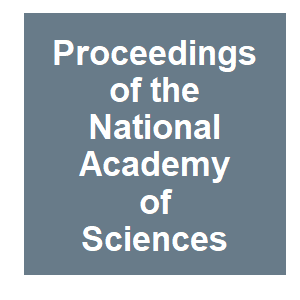
|
Standardizing the Definition of Gene DriveL. S. Alphey, A. Crisanti, F. Randazzo and O. S. Akbari, Proceedings of the National Academy of Sciences, 202020417. 2020.
As members of the gene drive community, we have developed a set of definitions to help stakeholders discuss the topic and communicate using a common understanding of terms. |

|
Mutagenic chain reaction cannot be sufficiently controlledChristoph Then, Testbiotech, 2020.
The European Food Safety Authority (EFSA) has published the results of its public consultation on the risks of so-called gene drive organisms. Testbiotech accuses the authority of disguising the real dimension of the risks. Gene drives are designed to spread artificial genetic ... |

|
The ethical way to alter organismsK. Esvelt, Boston Globe, 2020.
As my colleagues and I first described in 2014, we can use CRISPR genome editing to duplicate the most powerful form of “gene drive,” a ubiquitous natural phenomenon that happens when a genetic change is inherited more frequently than usual. Encode the CRISPR machinery next ... |

|
Advances in genetic engineering test democracy’s capacity for good decision-makingN. Kofler and R. Taitingfong, Boston Globe, 2020.
New advances in genetic engineering and their application for environmental conservation and public health are further testing our democracy’s capacity for good decision-making. With minimal public input, the Environmental Protection Agency recently approved the release of ... |

|
Driven to ExterminateZ. Moloo and J. Thomas, etc group, 2020.
Gates’s ‘let’s deploy it’ response may not seem out of character, but it was an unusually gung ho response given how risky the technology is widely acknowledged to be. |

|
Do Africans Want Genetically Modified Mosquitoes?U. Effiong, The Pursuit, 2020.
The recent publication by fellow Nigerian scientists—Patricia Okorie and colleagues—originally drew my attention to the issue of GMMs. |

|
Global citizen deliberation on genome editingJ. S. Dryzek, D. Nicol, S. Niemeyer, S. Pemberton, N. Curato, A. Bächtiger, P. Batterham, B. Bedsted, S. Burall, M. Burgess, G. Burgio, Y. Castelfranchi, H. Chneiweiss, G. Church, M. Crossley, J. de Vries, M. Farooque, M. Hammond, B. He, R. Mendonça, J., Science, 369:1435. 2020.
Here we show how, as the global governance vacuum is filled, deliberation by a global citizens' assembly should play a role, for legitimate and effective governance. |

|
Why the UK could end up deploying risky gene drives while ignoring natural biological controlJ. Mathews, GM Watch, 2020.
First they cloned Dolly the sheep. Now they’re targeting grey squirrels |

|
Do Africans need genetically modified mosquitoes?genetically modified, mosquito, oxitec, autocidal, SIT, perspective, malaria, gene drive synthetic, engagement,, Mail and Guardian, 2020.
The following is an updated version of an article I wrote for the University of Michigan Risk Science Centre a while ago: |

|
Viewpoint: Is there a scientific basis to ban gene drive technology that can rid us of virus-carrying rodents and mosquitoes?K. Vavitas, Genetic Literacy Project, 2020.
Gene drives may be invaluable tools to control the spread of parasites, invasive species, and disease carriers. But the technology has faced strong opposition from activist groups and some mainstream scientists based on environmental and food safety. Are these concerns valid? |

|
Cytoplasmic incompatibility: an autocidal mechanism for mosquito population controlV. Dev, BugBitten BMC, 2020.
Cytoplasmic incompatibility resulting in non-reciprocal fertility is a naturally occurring phenomenon, but remains unexplored to greater extent for the control of insect vector populations. This mechanism deserves priority for mosquito control and reducing disease transmission, ... |

|
CRISPR gene drives could eliminate many vector-driven pests and diseases, but challenges remainJ. Champer, Genetic Literacy Project, 2020.
A functioning gene drive system could fundamentally change our strategies for the control of vector-borne diseases by facilitating rapid dissemination of transgenes that prevent pathogen transmission or reduce vector capacity. CRISPR/Cas9 gene drive promises such a mechanism, ... |

|
An argument for gene drive technology to genetically control populations of insects like mosquitoes and locustsI. Ronai and B. Lovett, The Conversation, 2020.
The fate of society rests in part on how humans navigate their complicated relationship with insects – trying to save “good” insects and control “bad” ones. Some insects, like mosquitoes, bite people and make them sick – remember Zika? Now the U.S. mosquito season is ... |
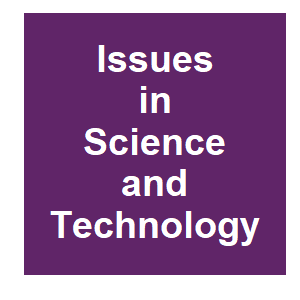
|
Socrates Untenured: Ethics, Experts, and the Public in the Synthetic AgeC. Preston, ISSUES in Science and Technology, 2020.
C. Preston (2020). Three tools have transformed biotechnology over the past decade and a half. Gene reading has made it possible to quickly sequence the genome of any living creature. Gene synthesis has made it possible to construct DNA sequences in the lab from constituent ... |

|
3 innovative technologies stopping malariaB. Muni, The Borgen Project, 2020.
Malaria has plummeted by 40% fifteen years after 2000. A report that NCBI published attributed this to mosquito preventative measures like bed netting and insecticides. These interventions and practices, like wearing light color clothing, help at-risk populations fight malaria. ... |

|
Beyone the buzzC. Watson, The Journal Gazette, 2020.
Lately I have found I need to force myself to follow science stories about something besides the pandemic. A story I consider hopeful involves genetically modified mosquitoes; we are developing a new tool that can reduce disease and save lives. The goal is to dramatically ... |
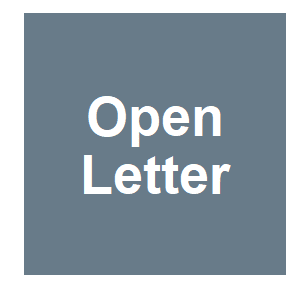
|
Please support a global moratorium on the environmental release of gene drive organismsJ. Riss, J. Munic and B. Harlin, Open Letter, 2020.
J. Riss, J. Munic and B. Harlin (2020). Open Letter. We, the undersigned civil society organizations, write to you to request that the EU Commission fully supports the EU Parliament's call for a global moratorium on the release of Gene Drive Organisms (GDOs). This is in view of ... |

|
Soon we’ll be able to engineer the wild, can the policies keep up with the science?M. Montague and A. Kobokovich, The Hill, 2020.
Humans have been able to genetically alter the world around them for thousands of years. With the domestication of dogs at least 14,000 years ago, genetically modified organisms (GMOs) have been a constant feature of human society; only recently have we gained the ability to ... |

|
Species Extinction & the Case for a Global Moratorium on Gene DrivesM. Imken, ARC, 2020.
One million species are currently threatened with extinction, and humanity faces the challenge of stopping the sixth mass extinction in the history of our planet. Yet a new technology called Gene Drive enables human beings to reprogram wild species by genetic engineering and to ... |
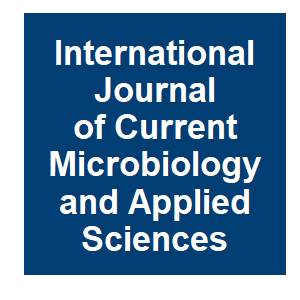
|
Gene Drive: Can this be the Future of Agricultural Pest Management?P. Mondal, U. Mohapatra and M. Ganguly, International Journal of Current Microbiology and Applied Sciences, 9. 2020.
A world free of hunger may be possible when the agricultural production exceeds the global demand for the food. In the era of increasing population, the need for increased food production can be attainable by managing the destructive pests of the agricultural and horticultural ... |
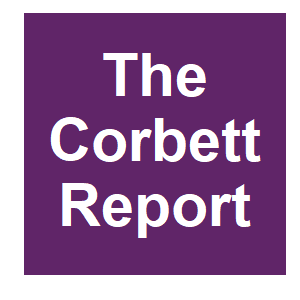
|
Jonathan Latham on Gene Drives and the Gates FoundationJames Corbett, The Corbett Report, 2020.
Jonathan Latham of Independent Science News joins us to discuss his 2017 article, “Gates Foundation Hired PR Firm to Manipulate UN Over Gene Drives.” We talk about gene drives, the dangers inherent in this technology, how the UN is involved, and why the Gates Foundation and ... |

|
Genetically modified mosquitoes could be released in Florida and Texas beginning this summer – silver bullet or jumping the gun?B. Allan, C. Stone, H. Tuten, J. Kuzma and N. Kofler, The Conversation, 2020.
On May 1, 2020, the company Oxitec received an experimental use permit from the U.S. Environmental Protection Agency to release millions of GM mosquitoes (labeled by Oxitec as OX5034) every week over the next two years in Florida and Texas. Females of this mosquito species, Aedes ... |

|
Engineered Gene Drives for Pest ManagementG. Miglani, Biotechnology for Plant Disease Diagnosis and Management, 2020.
Genes in sexually reproducing organisms normally have, on average, a 50% chance of being inherited, but some genes have a higher chance of being inherited. These genes can increase in relative frequency in a population even if they reduce the odds that each organism will ... |

|
Bioengineering horizon scan 2020L. Kemp, L. Adam, C. R. Boehm, R. Breitling, R. Casagrande, M. Dando, A. Djikeng, N. G. Evans, R. Hammond, K. Hills, L. A. Holt, T. Kuiken, A. Markotić, P. Millett, J. A. Napier, C. Nelson, S. S. ÓhÉigeartaigh, A. Osbourn, M. J. Palmer, N. J. Patron, E. P, eLife, 9:e54489. 2020.
Horizon scanning is intended to identify the opportunities and threats associated with technological, regulatory and social change. In 2017 some of the present authors conducted a horizon scan for bioengineering (Wintle et al., 2017). Here we report the results of a new horizon ... |

|
Gene Drives: Pursuing opportunities, minimizing riskK. L. Warmbrod, A. Kobokovich, R. West, G. Ray, M. Trotochaud and M. Montague, Center for Health Security, 2020.
This study analyzed the current state of gene drive technologies, the ways in which they might be deployed in the field, and the state of regulatory policy governing their development. |

|
Risk assessment challenges of synthetic gene drive organismsE. Sirinathsinghji, TWN Biosafety Briefing, 2020.
The development of gene drive organisms (GDOs) is highly controversial, as illustrated by the intense academic, political and societal debates over their potential deployment for a variety of applications from public health to conservation, agriculture and dual-use technologies. ... |

|
Risk assessment challenges of synthetic gene drive organismsE. Sirinathsinghji, TWN Biosafety Briefing, 2020.
|

|
Understanding the Science of Gene Drive and the Potential for an Improved Crop Pest Control System in NigeriaA. Isah and R. S. M. Gidado, OFAB Nigeria, 2020.
Several studies have shown that the Cas9-mediated gene drive technology is cheaper and will be easily affordable by the efficient Nigerian scientists to explore. The application of the gene drive technologies have many more controls over several other devastating insects in ... |

|
When Humankind Overrides EvolutionM. Skipper, World Economic Forum, Davos 2020. 2020.
Advances in synthetic biology and other novel genetic procedures could resurrect extinct species or eliminate dangerous pests. What actions are needed now to ensure the ethical and responsible application of new genetic techniques? |

|
Irreversible ecosystem engineering with Gene Drive OrganismsSave Our Seeds, Save Our Seeds, 2020.
Gene drive technology is a particular application of the new genetic engineering tool CRISPR/Cas9. It is designed to genetically modify, replace or eradicate wild populations or entire species. So far it works in mosquitos, mice, flies, yeast and nematodes. But in principle it ... |

|
Gene Drive FilmSave Our Seeds, , 2020.
This is a video based on the findings in GENE DRIVES: A report on their science, applications, social aspects, ethics and regulations which you can find here. There was a Symposium on May 24, 2019 that covers the topics in the report and the presentations at that symposium can ... |

|
Gene drives : equity demands civilityN. Kofler, Nature, 565:25. 2020.
At the 14th Conference of the Parties of the United Nations Convention on Biological Diversity late last year, I witnessed the rapid deterioration of a crucial discussion. It was on the potential of synthetic biology in environmental conservation. What started as heckling turned ... |

|
These are the 5 most dystopian technologies of 2020 and beyondM. Sullivan, FastCompany, 2019.
Tech is always both good and bad. But we live in a time when everything gets weaponized—ideas, images, ancient texts, biases, and even people. And technology provides the tools to do it easier, faster, and with less resources. |

|
Exterminator genes: The right to say no to ethics dumpingBassey-Orovwuje, M., J. Thomas and T. Wakeford, Development, 62:121-127. 2019.
The scientific-industrial complex is promoting a new wave of genetically modified organisms, in particular gene drive organisms, using the same hype with which they tried to persuade society that GMOs would be a magic bullet to solve world hunger. The Gates Foundation claims that ... |

|
Gene drives in Africa – A PodcastWakeford, T., etc Group, 2019.
In Episode #1 ETC's Tom Wakeford speaks with Ugandan lawyer and advocate Barbara Ntambirweki about gene drives, a powerful new genetic technology that can change species in the wild and make species go extinct. |

|
Gene Drives and new genetic manipulation in agricultureTerra de Direitos, Terra de Direitos, 2019.
Gene drives are forms of genetic editing or manipulation of live organisms. They are the most dangerous forms of transgenics which edit genetic characteristics without necessarily including a new gene, but rather manipulating existing genes of live organisms, i.e. live organism ... |

|
Gene drives in Wisconsin agriculture: What are they, and should you support it?Jones, M. and Mitchell, P. D., Renk Agribusiness Institute, 2019.
Spotted wing drosophila and citrus psyllid are not serious economic problems for Wisconsin agriculture. However, these and other smaller, geographically limited applications of gene drives are excellent ways to prove the concept and refine the methods. Pending the outcome of ... |

|
Malaria eradication within a generation: ambitious, achievable, and necessaryR. G. A. Feachem, I. Chen, O. Akbari, A. Bertozzi-Villa, S. Bhatt, F. Binka, M. F. Boni, C. Buckee, J. Dieleman, A. Dondorp, A. Eapen, N. Sekhri Feachem, S. Filler, P. Gething, R. Gosling, A. Haakenstad, K. Harvard, A. Hatefi, D. Jamison, K. E. Jones, C., Lancet, 394:1056-1112. 2019.
50 years after a noble but flawed attempt to eradicate malaria in the mid-20th century, the global malaria community is once again seriously considering eradication. Momentum towards eradication has been building for decades, and more than half of the world’s countries are now ... |

|
Genetically engineered mosquitoes out of controlGM Watch, GM Watch, 2019.
According to a new scientific publication, genetically engineered mosquitoes produced by the biotech company Oxitec (Intrexon) have escaped human control after trials in Brazil. They are now spreading in the environment. The yellow fever mosquitoes (Aedes aegypti) are genetically ... |

|
Gene Drives in Africa: Civil Society Speaks OutAfrican Centre for Biodiversity, African Centre for Biodiversity, 2019.
On Monday 1st July 2019, Target Malaria announced the release of genetically modified (GM) sterile male mosquitoes in Bana, a village in Burkina Faso – the first GM insect to be released in Africa. This is Phase I – by Phase III, Target Malaria aims to release gene drive ... |

|
Gene drive organisms: What Africa should know about actors, motives and threats to biodiversity and food systemsSirinathsinghji, E., African Centre for Biodiversity., 2019.
In this briefing paper, we set out the key issues that our governments should have addressed with African civil society before endorsing positions and setting the benchmark for Africa-wide policy. In this regard, we point out that, while the impetus for the AU position might well ... |

|
Gene drive technology makes mouse offspring inherit specific traits from parentsCooper, KLG, Hannah A., The Conversation, 2019.
As mouse geneticists, we spend a lot of time waiting for mice to make more mice. Their small size, ease of care and willingness to mate have made mice the “mammal of choice” for scientists for more than a century. Indeed, these wriggly fur balls that strike fear in the hearts ... |

|
Gene editing research highlights challenges in using CRISPR for pest controlDreaver, C, Radio New Zealand, 2019.
US researchers have had some success in using the gene editing technique CRISPR to test out a gene drive in mice, to modify their genes - highlighting the challenges researchers face if it were to be used in pest eradication. |

|
Gene Drives Work in Mice (if They’re Female)Rennie, JC, Jordana, Quanta Magazine, 2019.
Conservationists and bioethicists often regard the packages of engineered DNA called “gene drives” with a mixture of wonder, excitement and dread. Gene drives violate the normal rules of inheritance by making sure they get passed down to all of their host organism’s ... |
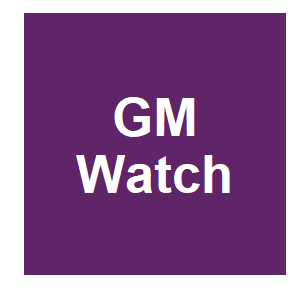
|
Gene drive mosquitoes and the new era of medical colonialismMayet, MC, L. I.; Sirinathsingji, E, GM Watch, 2019.
The highly contentious issue of gene drive technologies – a novel extreme form of genetic engineering designed to alter or even eradicate entire populations and species – was at the heart of the international negotiations at the biennial UN Biodiversity Conference held in ... |
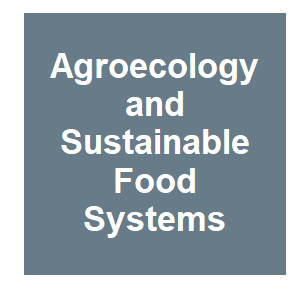
|
Gene driving the farm: who decides, who owns, and who benefits?Montenegro de Wit, M, Agroecology and Sustainable Food Systems, 43:1054-1074. 2019.
This commentary essay explores the social and ecological implications of gene-driving agriculture. |
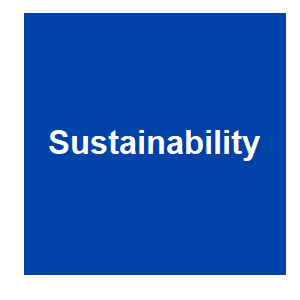
|
Sustainability as a framework for considering gene drive mice for invasive rodent eradicationBarnhill-Dilling, SKS, M.; Blondel, D. V.; Godwin, J., Sustainability, 11:1334. 2019.
Gene drives represent a dynamic and controversial set of technologies with applications that range from mosquito control to the conservation of biological diversity on islands. Currently, gene drives are being developed in mice that may one day serve as an important tool for ... |

|
Africans paid 69 cents an hour to be bitten in GMO mosquito trialGM Watch, GMWatch, 2018.
Under the headline, Malaria trial pays Africans to be bitten, The Times of London reports that human “guinea pigs” in the West African state of Burkina Faso are being paid to expose themselves to mosquitoes that could potentially carry malaria or other diseases. ; ; Although ... |

|
Africa kicks against proposed gene drive moratorium at UN Biodiversity ConferenceGakpo, JO, Cornell Alliance for Science, 2018.
Africa has kicked against a proposed moratorium on the environmental release of organisms containing gene drives now under debate at the United Nation’s biodiversity conference in Egypt. |

|
Burkina Faso’s mosquito controversy: Consent, awareness and risk assessment in Target Malaria’s gene drive projectFuhr, L, Klima der Gerechtigkeit, 2018.
The 14th Conference of the Parties (COP 14) to the Convention on Biological Diversity is taking place in Sharm El-Sheikh, Egypt, from the 17th to the 29th of November, 2018. Amongst other things, delegates are discussing a moratorium on the release of gene drives, a powerful ... |

|
Genetic extinction technology challenged at UN Convention on biodiversityreporter, A, Ekklesia, 2018.
From November 17-29 2018, international conservation and environmental leaders are meeting to call on governments to protect biodiversity and Indigenous Peoples’ and local communities’ rights from controversial new biotechnologies. Friends of the Earth says gene drives have ... |

|
Viewpoint: UN should reject a proposed ban on gene drivesBailey, R, Genetic Literacy Project, 2018.
A draft resolution would revise the U.N. Convention on Biological Diversity to call on governments to “refrain from” releasing organisms containing engineered gene drives, according to the MIT Technology Review. A gene drive is a technology that can rapidly propagate a ... |

|
Zambian citizens call on leaders to raise concerns on GMOs at upcoming meeting in EgyptBiodiversity, ZAfAa, Lusakatimes, 2018.
Zambia supports the global call for a moratorium on Gene Drive releases, including applied research such as open field trials |

|
Let’s say we can force the mosquito into extinction — should we do it?Porterfield, A, Genetic Literacy Project, 2018.
Not many people like mosquitoes. So why not eliminate them?; Newer techniques like CRISPR/Cas9 gene editing may make this possible. A new study by researchers at Imperial College London showed how CRISPR/Cas9 can generate a mutant gene that renders female mosquitos infertile, ... |

|
Proposed U.N. test ban on gene drives is idioticBailey, R, Reason, 2018.
A draft resolution would revise the U.N. Convention on Biological Diversity to call on governments to "refrain from" releasing organisms containing engineered gene drives, according to the MIT Technology Review. A gene drive is a technology that can rapidly propagate a particular ... |

|
Call for a global moratorium on gene drive releasesNetwork, TW, Biosafety Information Centre, 2018.
Gene drives are a genetic engineering tool that aim to force artificial genetic changes through entire populations of animals, insects and plants. Starting on the 17th of November, Parties to the United Nations Convention on Biological Diversity will meet to discuss measures to ... |
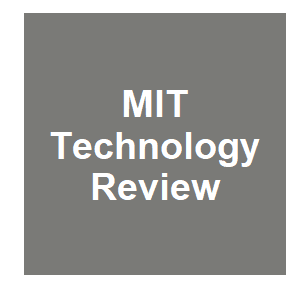
|
United Nations considers a test ban on evolution-warping gene drivesRegalado, A, MIT Technology Review, 2018.
Debate over a new idea for stopping malaria is pitting some environmental groups against Bill Gates. |

|
Do not betray Africa on synbio and gene drivesetc group, etc group, 2018.
As representatives of a broad range of African civil society organisations (CSOs), we do not feel represented by the delegations of Nigeria and South Africa, speaking on behalf of African Group, in their attempt to speak on behalf of the people of Africa on the issue of synthetic ... |

|
Release of risky GM mosquitoes in Burkina faso highly unethical.GM Watch, GM Watch, 2018.
Risky genetically modified (GM) “male-sterile” mosquitoes are due to be released in the near future in Burkina Faso by the Target Malaria research consortium. However, Target Malaria acknowledges that there are no benefits to the proposed GM mosquito release.; ; According to ... |

|
African Union’s endorsement of unproven gene drive mosquitoes “misguided”GM Watch, GMWatch, 2018.
The African Union (AU) is paving the way for the entry of the latest and most controversial form of genetic engineering – gene drive technologies. In July 2018 the AU released a report endorsing the development of the technology as well as "enabling legislation" for their ... |

|
A Call to Protect Food Systems from Genetic Extinction TechnologyGlobal Food and Agriculture Movement, etc Group, 2018.
Gene drives threaten natural systems. If released experimentally into the environment they may spread engineered genes uncontrollably through wild and domesticated species. This could alter ecological systems and food webs, harm biodiversity and eradicate beneficial organisms ... |

|
Just Say No to Agricultural Gene DrivesBassey-Orovwuje, M., Project Syndicate, 2018.
By forcing laboratory-made genes on an entire population or species, cutting-edge gene-drive technologies have the power to transform entire ecosystems in one fell swoop. But where leading industrial agriculture firms see dollar signs, farmers in the regions where gene drives ... |

|
Gene drive organisms: Warning of risks due to uncontrolled releasesBender, S.T., C., Testbiotech, 2018.
|

|
Gene drive organisms: Warning of risks due to uncontrolled releasesThen, C, Testbiotech, 2018.
The German Ministry for the Environment has in response to an open letter sent by several civil society organisations issued a statement very critical of genetically engineered organisms carrying a so-called gene drive. The ministry announced that it will take action on an ... |

|
Forcing the Farmetc group, etc group, 2018.
This report is being issued as an alert to governments, civil society organisations and grassroots movements. It points to how gene drives, while promoted as a tool for medicine and conservation, will find their real use in food and farming by agribusiness. It calls for a pause ... |

|
Letter: Gene Drive and Trust in ScienceBoëte, C., Gene Watch, 2018.
Committee of Responsible Genetics |
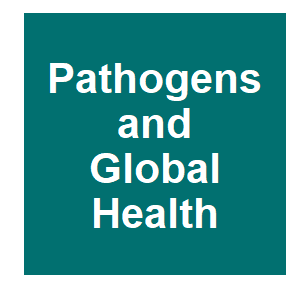
|
Considerations for the governance of gene drive organismsRudenko, L.P., Megan J.; Oye, Kenneth, Pathogens and Global Health, 2018.Governance is a broader and more flexible concept than statute-driven regulations as it incorporates components outside the latter?s remit. Considerations of governance are critical in the development of emerging biotechnologies such as gene drive organisms. These have been ... |

|
Editing nature: Local roots of global governanceKofler, N.C., James P.; Kuzma, Jennifer; Marris, Emma; Esvelt, Kevin; Nelson, Michael Paul; Newhouse, Andrew; Rothschild, Lynn J.; Vigliotti, Vivian S.; Semenov, Misha; Jacobsen, Rowan; Dahlman, James E.; Prince, Shannon; Caccone, Adalgisa; Brown, Timothy, Science, 2018.
|
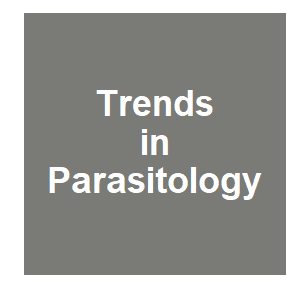
|
Transgenic Mosquitoes – Fact or Fiction?Wilke, A. B. B., J. C. Beier and G. Benelli, Trends in Parasitology, 34:456-465. 2018.
echnologies for controlling mosquito vectors based on genetic manipulation and the release of genetically modified mosquitoes (GMMs) are gaining ground. However, concrete epidemiological evidence of their effectiveness, sustainability, and impact on the environment and nontarget ... |

|
Conservation demands safe gene driveK. M. Esvelt and N. J. Gemmell, PLOS Biology, 15:e2003850. 2017.
Here, we explore the risk of accidental spread posed by self-propagating gene drive technologies, highlight new gene drive designs that might achieve better outcomes, and explain why we need open and international discussions concerning a technology that could have global ... |

|
Using CRISPR-based gene drive for agriculture pest controlV. Courtier-Orgogozo, B. Morizot and C. Boëte, EMBO Reports, 18:1481. 2017.
The authors respond to comments to their publication 10.15252/embr.201744205 |

|
Agricultural pest control with CRISPR-based gene drive: time for public debateV. Courtier-Orgogozo, B. Morizot and C. Boëte, EMBO Reports, 18:878-880. 2017.
Gene drive technology to control disease vectors or pests has great potential for addressing humanitarian and public health problems. Its application for pest control in agriculture, however, raises important environmental, social and ethical issues. |

|
National Academies hit the brakes on gene drive-modified organismsAbbasi, J., JAMA-Journal of the American Medical Association, 316:482-483. 2016.
Despite their potential for fighting Zika, malaria, and other public health scourges, organisms that have been engineered to quickly spread genetic modifications through a population—and possibly an entire species—are not ready for release into the wild, a committee of ... |

|
Gene Drives on the Horizon: Advancing Science, Navigating Uncertainty, and Aligning Research with Public ValuesU. S. National Academies of Sciences, Engineering, and Medicine, The National Academies Press, 2016.
Scientists have studied gene drives for more than 50 years. The development of a powerful genome editing tool in 2012, CRISPR/Cas9,1 led to recent breakthroughs in gene drive research that built on that half century’s worth of knowledge, and stimulated new discussion of the ... |

|
Opinion: Is CRISPR-based gene drive a biocontrol silver bullet or global conservation threat?Webber, BLR, S.; Edwards, O. R., Proceedings of the National Academy of Sciences of the United States of America, 112:10565-10567. 2015.
Scientists have recognized the potential for applying gene drive technologies to the control of invasive species for several years, yet debate about the application of gene drive has been primarily restricted to mosquitoes. Recent developments in clustered regularly interspaced ... |

|
Safeguarding gene drive experiments in the laboratoryAkbari, OSB, H. J.; Bier, E.; Bullock, S. L.; Burt, A.; Church, G. M.; Cook, K. R.; Duchek, P.; Edwards, O. R.; Esvelt, K. M.; Gantz, V. M.; Golic, K. G.; Gratz, S. J.; Harrison, M. M.; Hayes, K. R.; James, A. A.; Kaufman, T. C.; Knoblich, J.; Malik, H. S.; Matthews, K. A.; O'Connor-Giles, K. M.; Parks, A. L.; Perrimon, N.; Port, F.; Russell, S.; Ueda, R.; Wildonger, J., Science, 349:927-929. 2015.
Gene drive systems promote the spread of genetic elements through populations by assuring they are inherited more often than Mendelian segregation would predict (see the figure). Natural examples of gene drive from Drosophila include sex-ratio meiotic drive, segregation ... |

|
Concerning RNA-guided gene drives for the alteration of wild populationsEsvelt, KMS, Andrea L.; Catteruccia, Flaminia; Church, George M., eLife, 3:e03401. 2014.
Gene drives may be capable of addressing ecological problems by altering entire; populations of wild organisms, but their use has remained largely theoretical due to technical; constraints. Here we consider the potential for RNA-guided gene drives based on the CRISPR; nuclease ... |

|
The Sterile Insect Technique: can established technology beat malaria?M. E. H. Helinski, B. El-Sayed and B. G. J. Knols, Entomologische Berichten, 66:13-20. 2006.
The Sterile Insect Technique (SIT) is the mass production, sterilisation and subsequent release of sterile insects into a target population in an area-wide integrated approach. The released sterile males mate with wild females; they thus no longer produce offspring and therefore ... |



